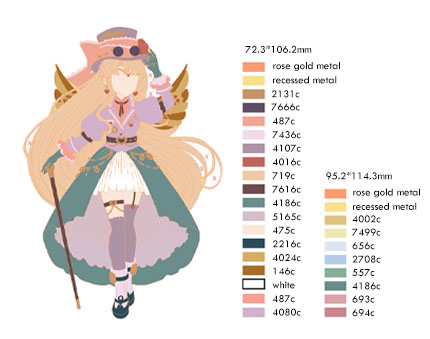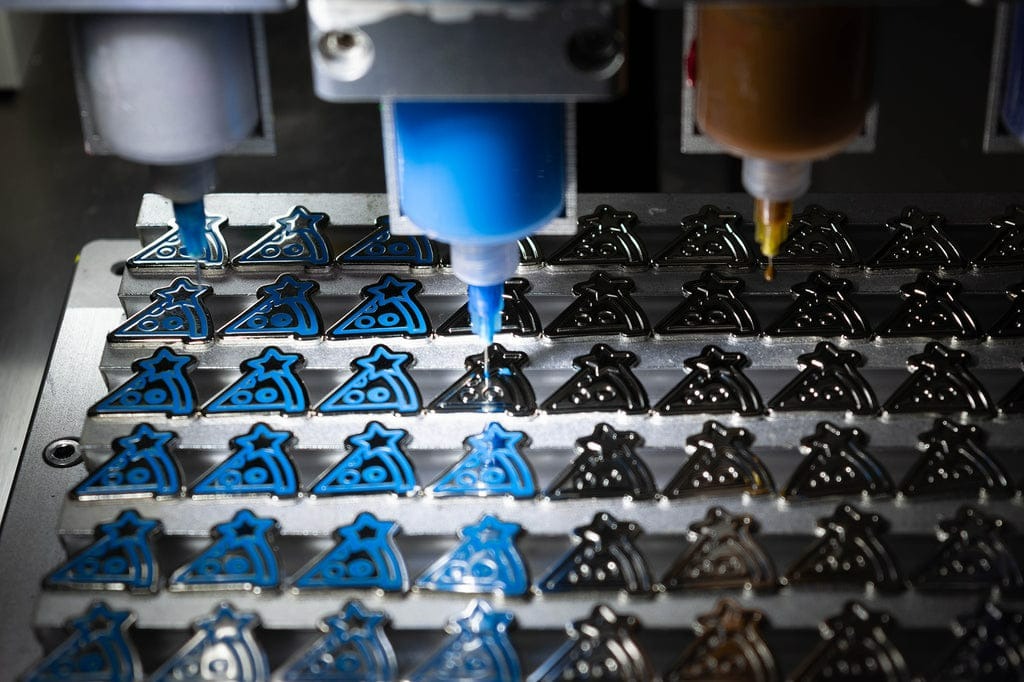Introduction
In today’s world, personalization is key to expressing one’s unique identity. One of the most popular ways to achieve this is through the creation of custom enamel pins. These small but mighty accessories have become a trendy and meaningful way to showcase individuality, commemorate special events, or promote a brand. Whether you’re an artist, a business owner, or simply someone looking to embark on a creative journey, this guide will provide you with everything you need to know about creating custom enamel pins. Let’s dive in!

Conceptualizing Your Design
The first step in creating a custom enamel pin is to develop a compelling and eye-catching design. Start by brainstorming ideas that align with your purpose, whether it’s a representation of your brand, a symbol of a significant event, or a personal statement. Consider color schemes, shapes, and themes that resonate with your intended audience. Remember to keep your design simple yet impactful to ensure it translates well into a small pin format.
Partnering with a Reliable Manufacturer
To bring your design to life, it’s crucial to find a reputable manufacturer that specializes in custom enamel pins. Research different manufacturers and assess their expertise, quality standards, pricing, and customer reviews. Look for a manufacturer that offers a range of customization options, such as different enamel types (hard enamel, soft enamel), plating finishes, and backing options.

Translating Your Design into Production
Once you’ve chosen a manufacturer, it’s time to prepare your design for production. Typically, you will need to provide a digital file of your design in vector format (such as Adobe Illustrator or CorelDRAW) to ensure high-quality reproduction. Collaborate with the manufacturer to finalize details such as pin dimensions, enamel colors, and metal plating options. Ask for a sample or digital mock-up to ensure your design is accurately represented.

Manufacturing and Production Process
The manufacturing process for custom enamel pins involves several stages. First, a mold is created based on your design, which serves as the foundation for the pin. Then, metal plating is applied, followed by the application of enamel colors in separate sections of the pin. Once the enamel is dried, the pin is polished and finished with a protective coating. The manufacturer will affix a pin post and a backing, such as a butterfly clutch or a rubber clutch.
Quality Control and Inspection
Before your custom enamel pins are ready for distribution, it’s crucial to perform quality control checks. Inspect each pin for any imperfections, such as uneven enamel, color bleeding, or missing plating. Ensure that the pin posts are securely attached, and the backing functions properly. Request a sample batch for your review before authorizing full production to maintain quality control.

Packaging and Presentation
To enhance the overall appeal of your custom enamel pins, consider investing in attractive packaging. This can include custom-designed backing cards, individual poly bags, or small gift boxes. Packaging not only protects the pins but also adds value to the customer experience.
Conclusion
Custom enamel pins have emerged as a popular way to express creativity and individuality. By following the steps outlined in this guide, you can bring your unique design to life, creating a tangible representation of your personal or brand identity. Remember, the journey of creating custom enamel pins is as exciting as the end result. So, let your creativity run wild, find a reliable manufacturer, and start making an impression with your very own custom enamel pins.

With their versatile design and wide range of customization options, custom enamel pins have become a favored accessory for individuals, businesses, and organizations alike. Embrace the power of personalization and let your ideas shine through these small but captivating creations. Get started on your



